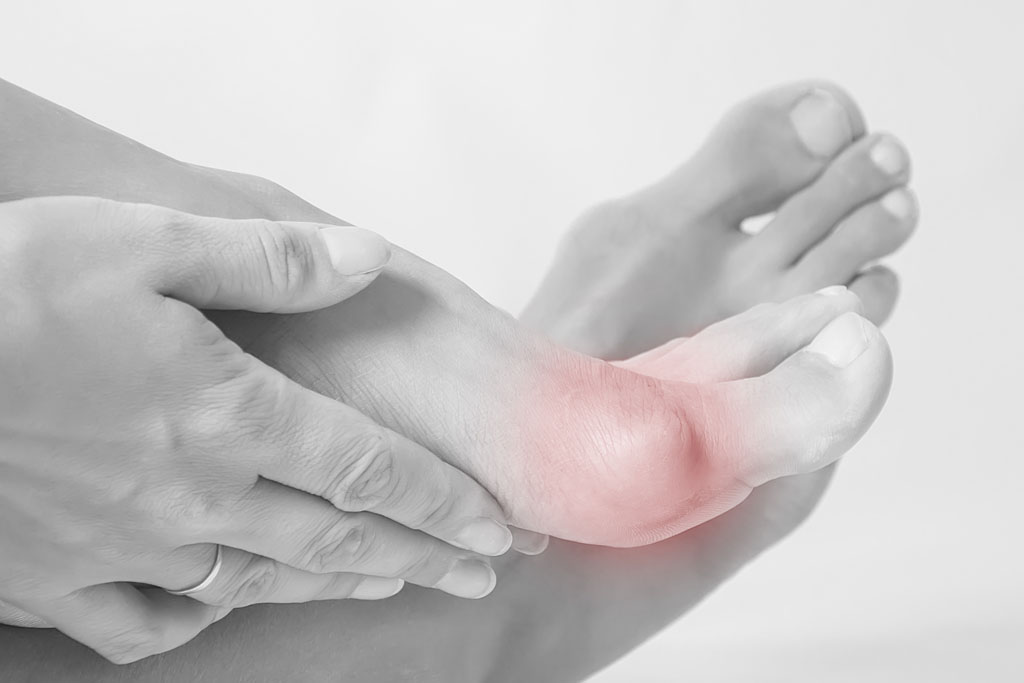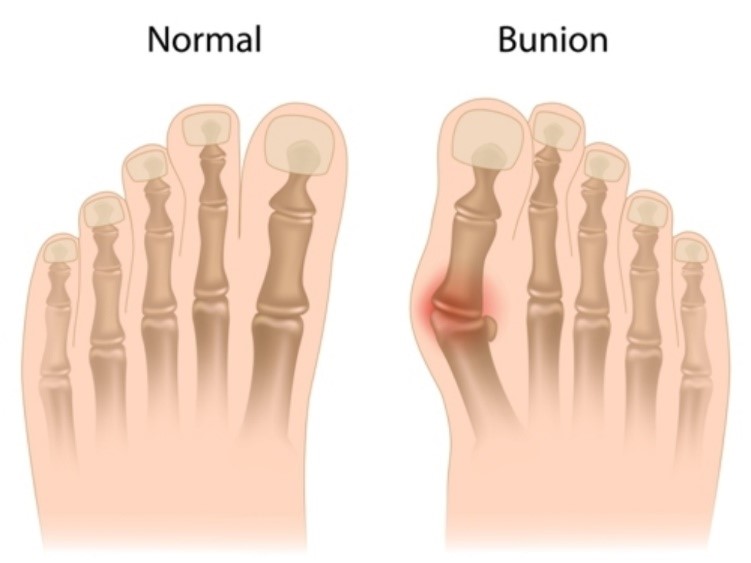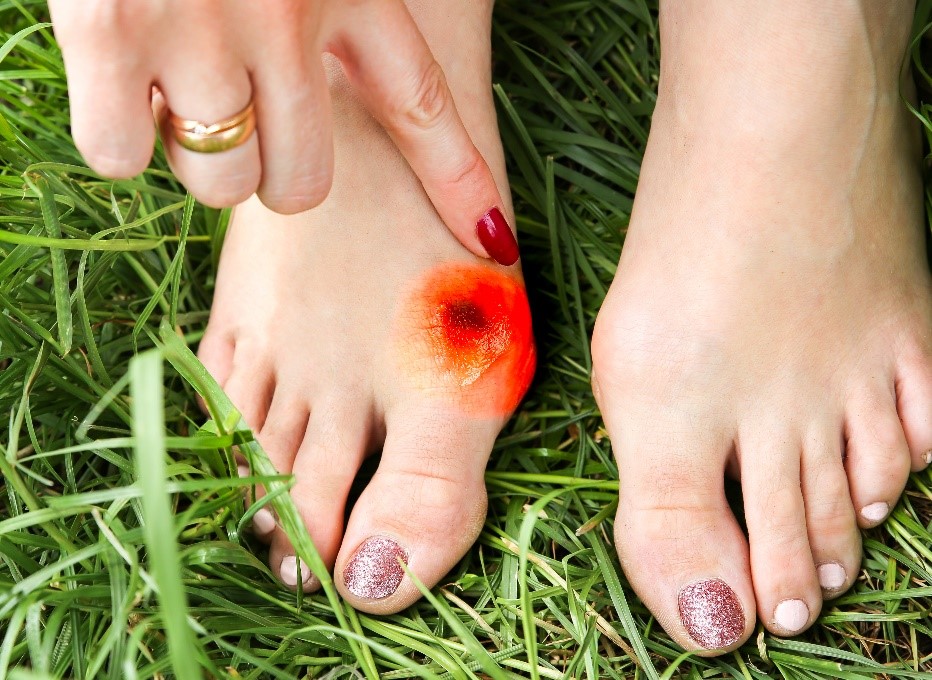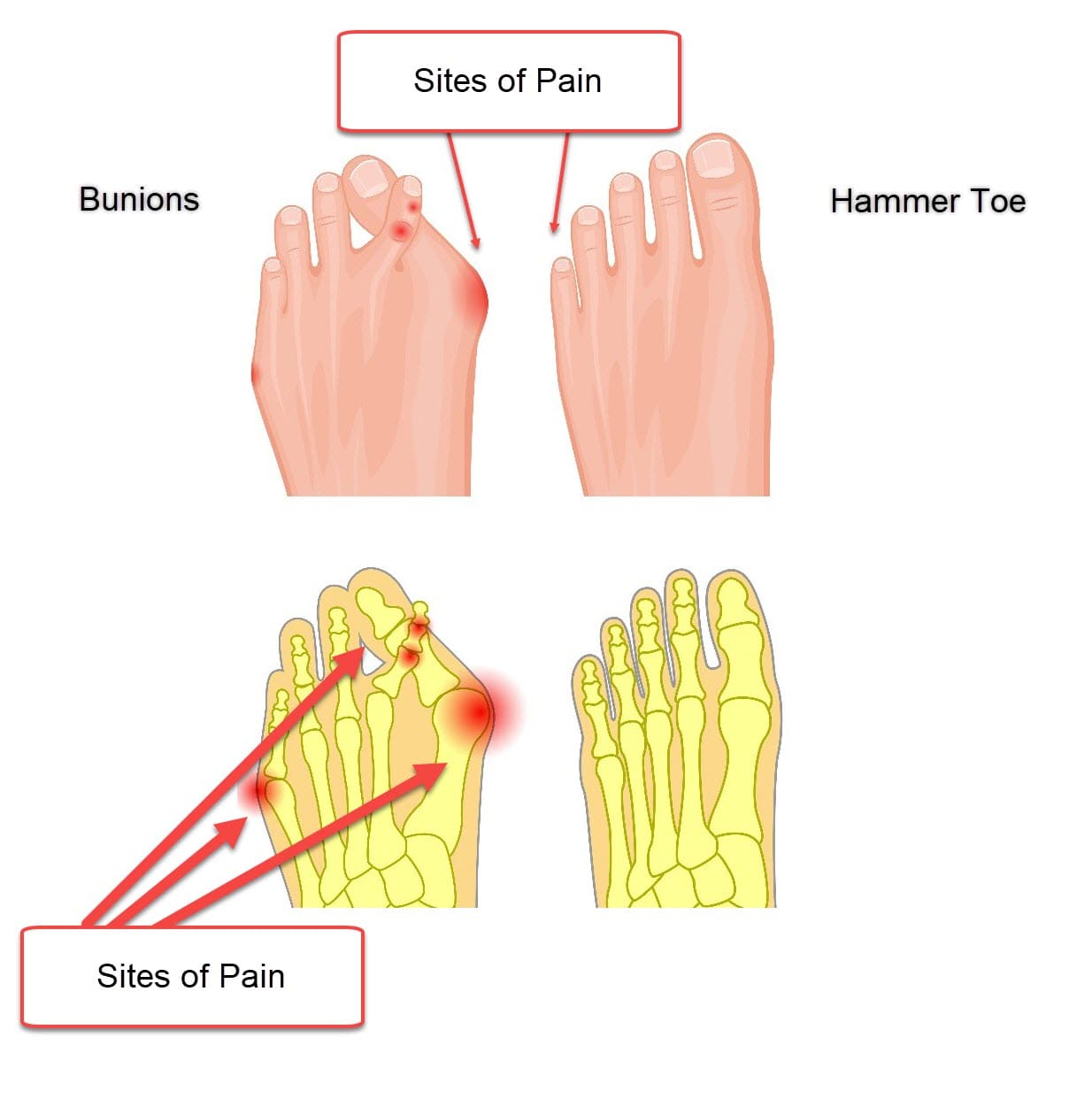
Hallux valgus, bunion in foot on white background
For many people, the pain caused by foot bunions will stop them from keeping active and enjoying pain free active lifestyle.
Foot bunions occur when the big toe bone deviates towards the little toe and the metatarsal bone behind the big toe moves away from the rest of the foot. The big toe joint then becomes prominent and dislocates which can make it impossible to walk or wear shoes with comfort. The medical term for this condition is hallux abducto valgus.
The prominence of the big toe joint caused by a bunion will often make someone choose wider shoes to wear. Bunions can rub the skin over the big toe joint causing infections to develop.

In people with conditions like poor circulation, diabetes or rheumatoid arthritis, ulceration of the skin over the big toe joint may happen.
The joint dislocation that is part of a bunion causes too much pressure to be placed by the big toe onto the 2nd toe in many cases. When this happens the 2nd toe will often change shape and become hammered. Hammertoes are often painful and commonly form with bunions. When bunions and hammer toes develop there can be many sites of pain on the foot. These site of pain include the sides of the foot and under the ball where a hard and painful lump can be felt while weight-bearing.
Thickening and irritation of the nerves between the toes can be associated with bunions and hammertoes. When thickening of the nerve between the 3rd and 4th toes happens the condition is called Morton’s neuroma.
Treatment of bunions requires the use of orthotic therapy and footwear advice. In some cases, our podiatric surgeon may prescribe non-steroidal anti-inflammatory drugs(NSAIDs) or administer cortisone injections Read more about steroid injections.
In other cases, where bunions remain painful or become larger and more symptomatic, surgical correction can be indicated. Bunion surgery is done by admission to a Day Hospital because there is no need to stay in hospital overnight.
Surgical correction of bunions requires that the metatarsal bone be realigned by cutting and shifting it into a better position. The soft tissue around the big toe joint is adjusted so that when the big toe goes up and down is stays in a straight direction.
At the end of the procedure, a small piece of bone is removed to take away the joint prominence that is always part of a bunion. After surgery, weight-bearing is limited greatly for the first 7 days.
It is quite safe to walk on the operated foot using a postoperative shoe provided to protect the corrected big toe joint. Most people are able to change from using the postoperative shoe to a lace-up running shoe at 4 to 6 weeks after surgery.
Discomfort after surgery is easily controlled using oral medication for a few days. Return to normal activity and footwear occurs from around 3 months after for most people.
Contact us today for a consultation.
Adelaide Foot and Ankle, Keeping you Active.

